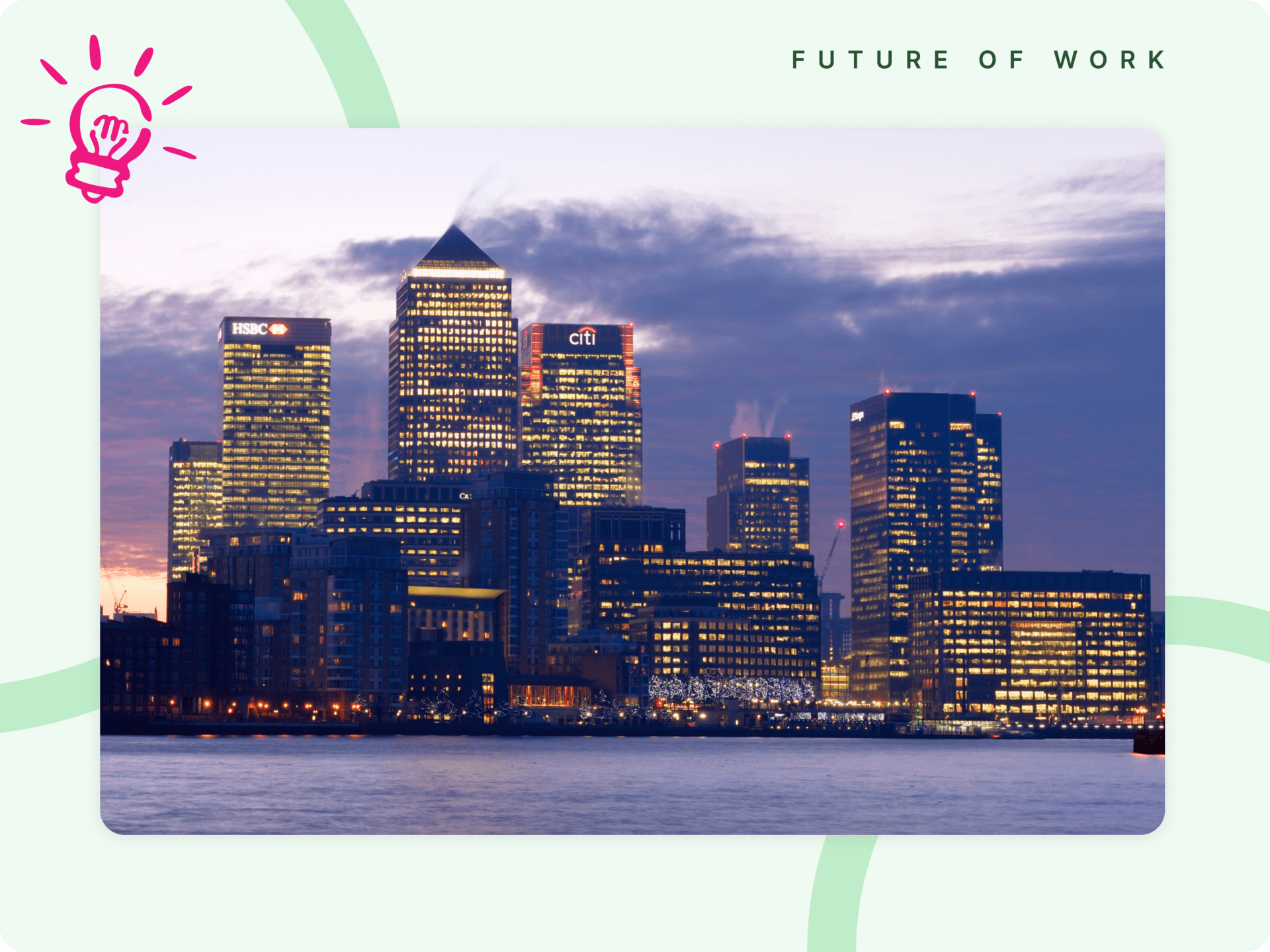While big banks like JPMorgan and Barclays are ramping up their return-to-office (RTO) mandates, Citigroup (Citi) is staying firm on its hybrid work policy. CEO Jane Fraser has made it clear: flexibility isn’t just a perk—it’s a competitive edge.
Unlike its peers, Citi is leaning into hybrid work, allowing employees to work remotely two days a week while spending three in the office. But here’s where they’re playing it smart: instead of forcing people back with strict policies, they’re making the office somewhere people actually want to be.
Making the Office a Destination, Not a Duty
Rather than dragging employees back with a “butts in seats” approach, Citi is investing £1 billion in a full-scale revamp of its Canary Wharf headquarters in London. And this isn’t just a fresh coat of paint—it’s a complete transformation.
Here’s what’s coming:
- Multi-Level “Villages” – No more endless rows of desks. Citi is redesigning the office to feel more like a community, with open staircases connecting floors to encourage interaction.
- Indoor Gardens – A triple-height green space in the middle of the building will bring a bit of nature inside. Think less corporate, more creative.
- Sustainability Focus – Instead of knocking the whole thing down and starting over, Citi is upgrading what’s already there to reduce its environmental footprint.
It’s all about rethinking what the office should be—a place that supports collaboration and culture, not just somewhere to clock in and out.

Citi Knows Hybrid is Working—So Why Force Change?
Here’s the key difference: Citi doesn’t need to issue a strict RTO mandate because hybrid work is already delivering results. If performance is strong, why risk disrupting something that works?
Clearly, Citi has seen the data. Productivity isn’t suffering. Business outcomes are holding steady. Employees are engaged. Unlike other firms tightening control out of fear, Citi recognizes that flexibility hasn’t harmed performance—if anything, it’s helped.
A recent study showed that 85% of leaders find it challenging to trust that employees are being productive in hybrid setups. Yet, the data tells a different story: productivity has stayed stable—or even improved—since hybrid work became the norm. In fact, 61% of those surveyed reported improved productivity thanks to hybrid arrangements. The reality is that the office alone doesn’t guarantee productivity; it’s about giving people autonomy and the right tools to succeed.
A forced return-to-office policy introduces risks: disengagement, increased attrition, and unnecessary friction with employees who value flexibility. Citi isn’t taking that gamble. Instead, they’re doubling down on an approach that’s already proving effective, reinforcing trust in their workforce while creating an office environment that draws people in naturally.
What the Data Says: Hybrid Work is Evolving
At Kadence, we track real-world hybrid work patterns, and here’s what the data tells us:
- Two days in the office is still the most common pattern among hybrid workers.
- But the average attendance is creeping up, fluctuating between two and three days per week.
- If this trend continues, three days could soon become the new standard.
So, why is this happening? Because companies and employees are figuring out what actually works. People still value in-person collaboration—but not at the cost of flexibility. A structured three-day office week allows teams to plan their in-office days better, fosters more meaningful collaboration, and makes those commutes feel more worthwhile.
With Kadence Insights, you can collate accurate data about how your employees are using the office which can help you make further informed decisions about how you optimize your real estate.
This aligns with Citi’s approach: encourage office attendance by making the space better, not by enforcing rigid mandates.
Why This Stands Out
Citi’s approach is different from what we’re seeing elsewhere. Other banks are tightening their grip, rolling back flexibility, and doubling down on old-school office culture. In contrast, Citi is saying: we trust our employees, and we’ll make the office worth their time.
This isn’t just good for morale—it’s good for business. Employees who feel valued and trusted are more engaged, more productive, and less likely to jump ship. And in a world where talent is everything, that’s a win Citi isn’t willing to sacrifice.

The Bottom Line
Hybrid work isn’t just about giving people a break from the commute—it’s about creating a work environment that works for them. Citi gets that. Instead of relying on mandates, they’re using smart design and flexible policies to get people back in naturally. And as more companies wrestle with what the future of work should look like, Citi might just be showing them the way forward.
If you would like to know how Kadence can help you and your team make hybrid work, book a demo today.




